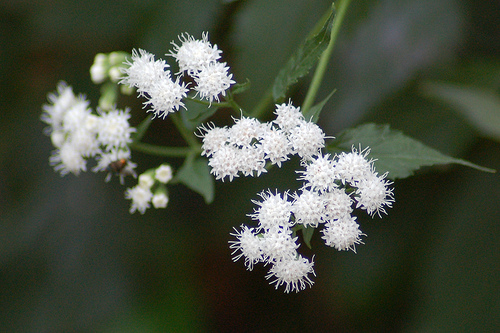White snakeroot is one root you do not want to eat.
- White snakeroots are perennial plants, found in the eastern parts of Canada and the United States, in North America.
- The scientific name of white snakeroot is Ageratina altissima and it is from the family Asteraceae, the family of daisies, and the plant was previously specified as Eupatorium rugosum.
- ‘White snakeroots’ are less commonly known as ‘richweeds’, ‘tall bonesets’ and ‘white sanicles’, though other plant species may also be called these names.
- White snakeroots grow in sunny to partly shady areas, typically to a height of 90 to 150 centimetres (3 to 5 feet).
- The small flowers of white snakeroots are of a white colour and grow in clusters; and they bloom most commonly during the summer and autumn months.
White Snakeroot
Image courtesy of White Wolf/Flickr
- White snakeroots are poisonous to many livestock and humans, and symptoms can include trembling, intestinal pain and vomiting, and it can be fatal if left untreated.
- White snakeroots plants grow from rhizomes that multiply, and they are easily grown from seeds that form after flowering.
- Cows that have eaten white snakeroot will have toxic milk and meat, and this causes poisoning, or ‘milk sickness’ as it is known, in humans if they consume the products.
- White snakeroot rhizomes have been historically been used to treat snakebites when made into poultice, hence its common name.
- White snakeroots can be used ornamentally, prominently in cottage-themed gardens.
Bibliography:
Ageratina altissima, 2016, Wikipedia, https://en.wikipedia.org/wiki/Ageratina_altissima
Ageratina altissima, Missouri Botanical Garden, http://www.missouribotanicalgarden.org/PlantFinder/PlantFinderDetails.aspx?kempercode=a747
White Snakeroot, n.d, Illinois Wildflowers, http://www.illinoiswildflowers.info/woodland/plants/wh_snakeroot.htm







